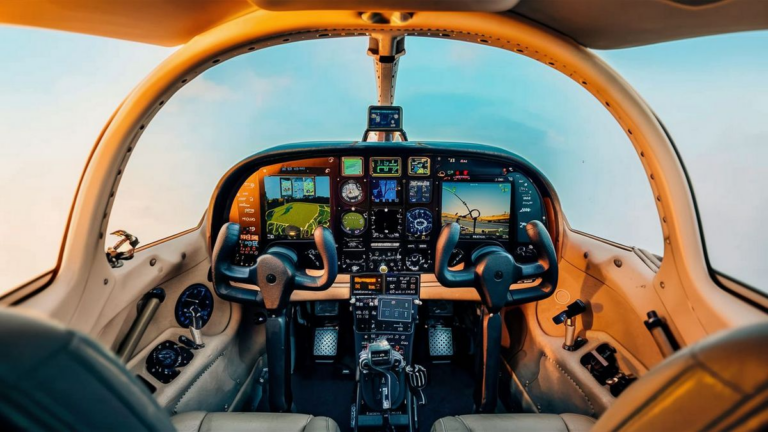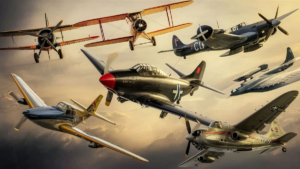Light Sport Aircraft, often abbreviated as LSA, represent a fascinating category within the realm of aviation. These aircraft, designed for recreational and sport flying, have gained popularity for their accessibility, versatility, and performance. In this article, we will delve into the intricacies of what defines a light sport aircraft and explore the unique features that set them apart in the aviation world.
Defining Light Sport Aircraft
Light Sport Aircraft, as defined by the Federal Aviation Administration (FAA) in the United States, are compact, lightweight planes that adhere to specific regulations. These regulations include limitations on weight, speed, and seating capacity. LSAs are designed to be easy to operate and maintain, making them an attractive option for aviation enthusiasts, recreational pilots, and flight schools.
Key Characteristics
Light Sport Aircraft typically exhibit several key characteristics that distinguish them from other types of aircraft. They are limited to two seats, have a maximum takeoff weight of 1,320 pounds, and a maximum speed of 120 knots (138 mph). Additionally, LSAs are equipped with fixed landing gear and are often powered by engines with 120 horsepower or less.
Categories of Light Sport Aircraft
LSAs are further categorized based on their design and purpose. The two main categories are airplane LSAs and weight-shift control LSAs. Airplane LSAs are traditional fixed-wing aircraft, while weight-shift control LSAs, often known as trikes, have a flexible wing and are controlled by shifting the pilot’s weight.
Training and Certification
One of the significant advantages of Light Sport Aircraft is the simplified training and certification process. Pilots seeking a Sport Pilot Certificate can train in LSAs, requiring fewer flight hours compared to obtaining a Private Pilot Certificate. This accessibility has contributed to the growth of the sport aviation community.
Popularity and Community
The appeal of Light Sport Aircraft extends beyond their technical specifications. The LSA community is known for its camaraderie, with enthusiasts coming together at airshows, fly-ins, and events to share their passion for flying. The sense of community fosters a supportive environment for both seasoned pilots and those just starting their aviation journey.
Advancements in Light Sport Aircraft
As technology continues to evolve, so does the landscape of Light Sport Aircraft. Advances in materials, avionics, and propulsion systems have led to more efficient and capable LSAs. Electric propulsion, in particular, is gaining traction, offering a sustainable and environmentally friendly alternative to traditional internal combustion engines.
Future Outlook
The future of Light Sport Aircraft looks promising, with ongoing developments aimed at enhancing safety, performance, and sustainability. As the aviation industry embraces innovation, LSAs are likely to play a pivotal role in shaping the future of recreational flying.
Cost Considerations
While Light Sport Aircraft are renowned for their accessibility, it’s essential to consider the associated costs. Owning and maintaining an LSA involves expenses related to fuel, maintenance, insurance, and hangar/storage fees. Prospective pilots should factor in these costs when entering the world of light sport aviation.
Insurance for LSAs
Insuring a Light Sport Aircraft is a crucial aspect that pilots need to address. Insurance policies for LSAs may vary, taking into account factors such as pilot experience, aircraft usage, and the specific model. Exploring insurance options and understanding coverage details is imperative for responsible aircraft ownership.
Frequently Asked Questions
| Question | Answer |
|---|---|
| 1. Are LSAs suitable for long-distance flights? | Light Sport Aircraft are generally designed for shorter flights. While some models may have longer ranges, their primary focus is on recreational and local flying. |
| 2. Can LSAs be used for flight training beyond the Sport Pilot Certificate? | While LSAs are commonly used for Sport Pilot training, they may not be ideal for advanced training required for higher certifications. Pilots aiming for more extensive training may need to transition to larger aircraft. |
| 3. How does electric propulsion impact LSAs? | Electric propulsion in LSAs is gaining attention for its environmental benefits. It offers a cleaner and quieter alternative to traditional engines, contributing to the overall sustainability of light sport aviation. |
Exploring LSA Events
Participating in Light Sport Aircraft events provides enthusiasts with valuable experiences. Airshows, fly-ins, and exhibitions offer opportunities to witness the latest advancements, interact with industry professionals, and connect with fellow aviation enthusiasts. These events contribute to the vibrant LSA community and are a must for anyone passionate about light sport aviation.
Regional Regulations
It’s essential for LSA pilots to be aware of and comply with regional aviation regulations. While there are international standards, specific rules and restrictions may vary by country or region. Staying informed about local regulations ensures safe and legal LSA operations.
International LSA Collaboration
The international collaboration in the light sport aviation sector plays a pivotal role in shaping standards and fostering global cooperation. Organizations and associations worldwide work together to establish common guidelines, promote safety, and facilitate the exchange of ideas and innovations among the international LSA community.
See also:






